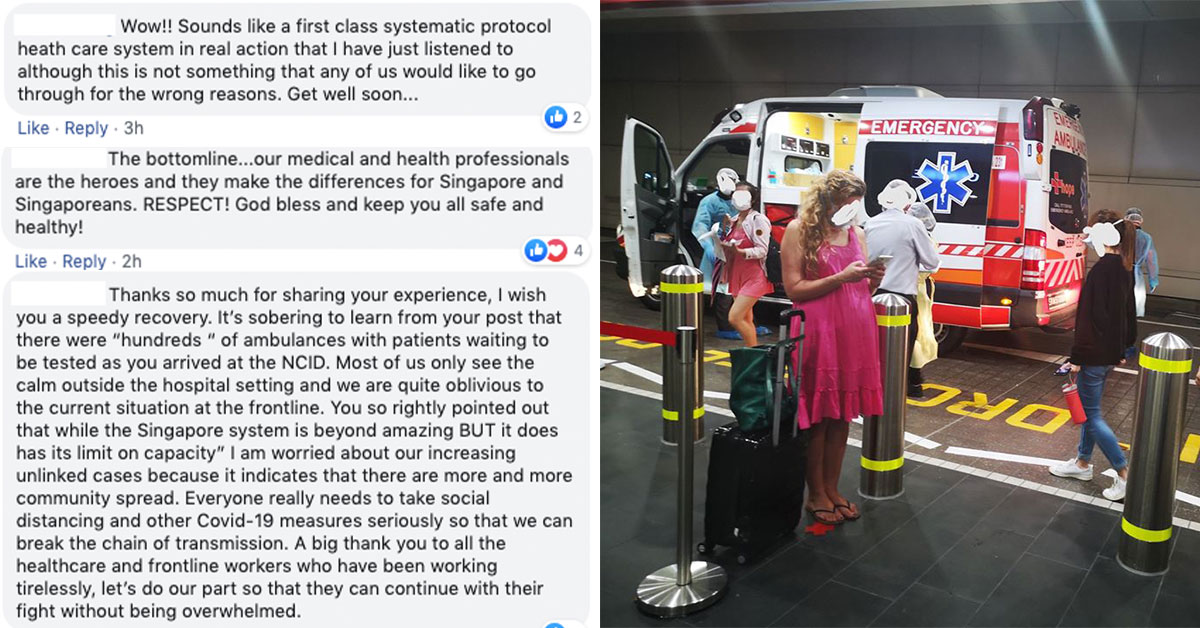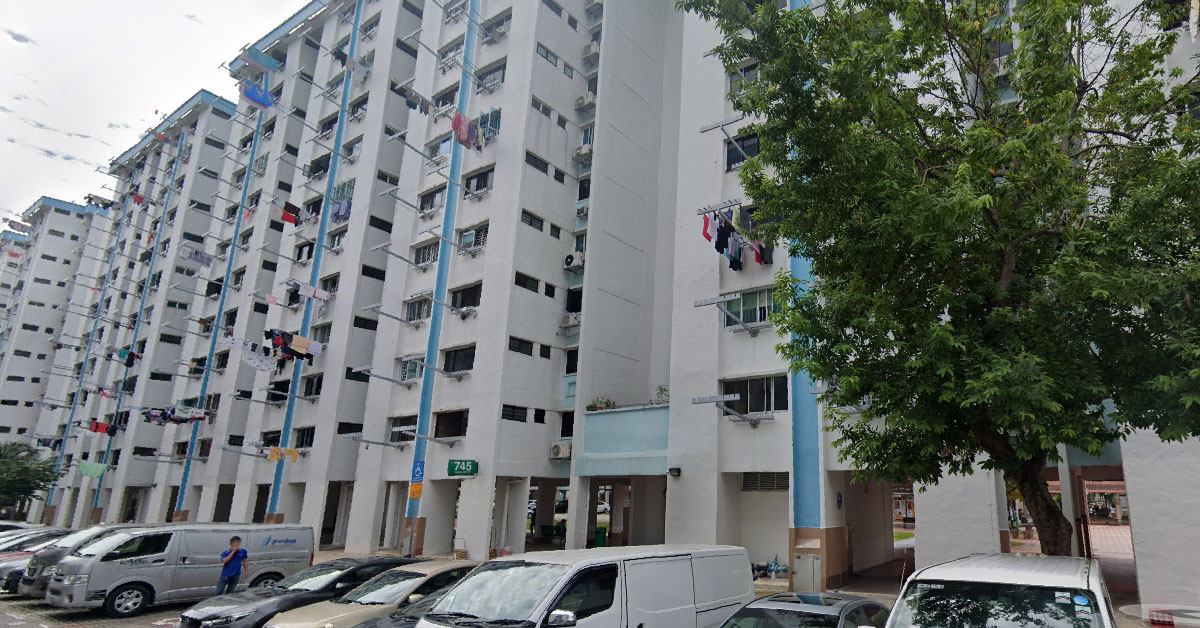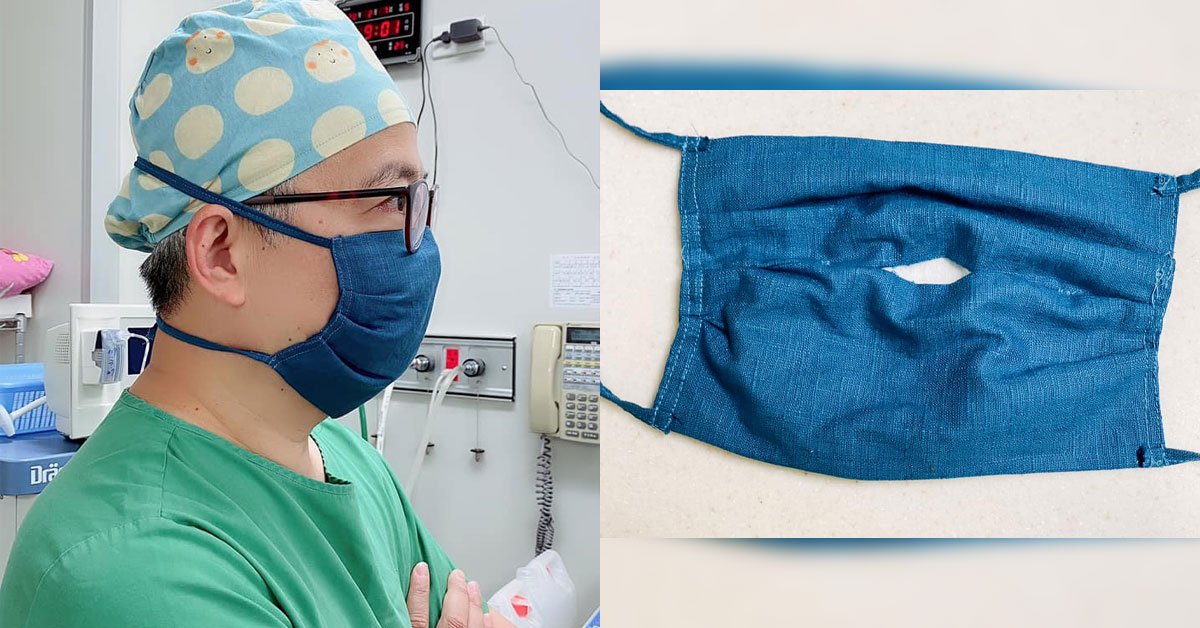It is insane that the COVID-19 outbreak has worsened to the point that there are more than 531,900 people infected worldwide, and more than 24,000 deaths. And the numbers are still rising each day.
Needless to say, every country is on the highest alert to ensure that their country is able to curb the spread of the highly contagious and deadly virus. Singapore, too, is doing the same, implementing many precautionary measures like making sure that Singaporeans practise social distancing during this critical period.
Malls & Shops in S’pore Now Have a Limit on How Many People Can Be In at One Time
One man has kindly provided a walkthrough on Facebook of how Singapore treats a suspect case and after reading it through, you’ll know why Singapore’s healthcare system is being praised by people worldwide.
Man Provides Walkthrough of How S’pore Treats a Suspect Case & It Earned Praises Worldwide
A man by the name of Mike Davie shared his experience via Facebook after he suspected that he could have been infected with COVID-19.
Here’s what happened.
The Initial Symptoms
He was working from home because he and his family had been issued a Stay-Home Notice (SHN) after having travelled to Korea and Canada previously. When he was on a work call at home, he suddenly felt like he was running a temperature. And then he realised that he had a dry cough earlier that day. Since Tylenol was not helpful in keeping his temperature down, he headed to a nearby clinic in a mall to explain his symptoms.
Right after he finished explaining, the doctor immediately rushed him “into a back isolation room while the staff closed the office for decontamination”. Everyone was working quickly, both to disinfect and to arrange for his exit to the National Centre for Infectious Diseases (NCID) by an ambulance.
He was promptly escorted by ambulance attendees down flights of stairs and out the back door into an ambulance.
Entering The Hospital
Once he reached the hospital, he noticed that the ground was marked with crosses to indicate where each potential COVID-19 patient should stand as they waited for their turn to undergo screening and segregation.
When it was his turn, he was told, “No pictures, no video”, and he was later marked as “High-Risk” after the nurse recorded his temperature to be very high. A porter then takes him into the hospital and despite the chaos of the sheer number of potential patients, the healthcare staff were all “calm, deliberate, organised and professional”.
He was later brought down the hall and all he saw were “perfectly placed desks” on “perfectly marked x’s on the floor”. Barriers were also in place so that everyone knew where to go.
He was then given some paperwork about the virus to review. At this point, he pauses to praise the Singapore healthcare system, saying that our system “is like no other (he has) witnessed”. He can see that all the staff members “are doing everything to ensure the safety of the citizens, protection of the economy and that they are going to (do) what it takes to end the spread”.
Time slowly passed as he waited for his turn to be called in to check his lungs. There are two outcomes for those in the high-risk like him. If one’s lungs are good, you’ll be able to take a swab test and head home to wait 12 hours for the result. If you are found to test positive for the virus, an ambulance will head to your home and fetch you to the hospital.
The other outcome is if your lungs are infected, which is the case of Mr Davie. So instead of heading home, he had to stay the night in the hospital.
The Private Isolation Room
He got taken to a private isolation room and once again, he was reminded not to take any photos or videos. He was then fitted with a “computer on (his) wrist that attaches to the electrode to monitor the basic stats of oxygen in (his) blood”.
He also had to take a nose swab test and he assured everyone that it’s as unpleasant as everyone claims. He took blood tests too before he was finally left alone.
The room itself was, according to Mr Davie, “one of the most clean, modern and organised hospital rooms” he had ever seen. And that wasn’t just it. His room is separated by a decontamination room from the hall, so every time a staff member visits him, they would have to wear disposable hazmat suits that cover them from head to toe.
When the staff members leave, they would have to enter the decontamination room, “dispose of all their protective clothing, wash and disinfect anything they brought in with them”.
Clearly, that’s a lot of work, but obviously, necessary work.
Even Mr Davie thought so, and he is amazed by the amount of protocol observed by the staff members just to visit him.
He also said, “As they risk getting infected themselves, ALL of them are cheery, calm and professional. I can’t imagine the stress they are going through, yet none of them show it.”
Running COVID-19 Tests Again & Again
He was confirmed to have pneumonia at 3am that night but had to wait 12 hours to see if COVID-19 was the cause of it.
At 3pm the next day, the doctor informs him that he tested negative for the virus, but because of the state of his lungs, and the fact that the virus can sometimes not be detected too easily, the doctors decided to run another COVID-19 test at 3am that night, just to be sure.
The second test comes back negative as well, but the doctors are still not convinced, so they decided to take a better look at his lungs with an X-Ray machine. And later that same night, he took his third COVID-19 test.
His Experience Thus Far
He didn’t update his post with the results of his third COVID-19 test, but he ended off his post by reflecting on what he had gone through the past few days.
He praised not just those in the medical industry “including the extremely important janitors and cleaning staff who are keeping the hospital safe”, but also the system too.
Advertisements
He wrote, “The system here in Singapore is beyond amazing to witness. But there is a limit to its capacity. Today, they are in good shape but that is because of the measure they take to keep it that way. Of health systems that aren’t as advanced, I can’t see how they will cope. It was like a war zone on the first floor with the number of sick people. Singapore is able to keep it managed and organised, but I don’t see how other nations will.”
It is enlightening to see the point of view of a patient because while we all talk about how hard the frontline workers are working, we don’t know exactly what they are going through during this critical period of time.
He ends off his post with a reminder to everyone not to take social distancing as a joke. He urges everyone to play their part and to “stop posting garbage” about the pandemic.
He also thanked everyone who is working for keeping everyone else safe.
Netizens Praise S’pore’s Healthcare System
His post has since garnered over 1.1K comments and 17K shares.
Advertisements
Many netizens worldwide commended the Singapore healthcare system. One even likened it to a “first-class systematic protocol healthcare system in real action”.

Some also commented on how the medical staff is Singapore’s heroes.



One other netizen shared her own experience that was similar to Mr Davie even though she was classified to be “Low-Risk”. She said that the nurses even provided snacks and blankets to make sure that they were comfortable while they were waiting for their turn.

It is amazing to see the amount of support we have for our healthcare system and our healthcare staff from people in Singapore and outside of Singapore. After all, they do deserve the recognition for risking their lives and doing the best that they can to ensure that all of us are safe.
If you are interested to read Mr Davie’s full post, you can read it below. But if you are unable to view the post, you can read it here.



